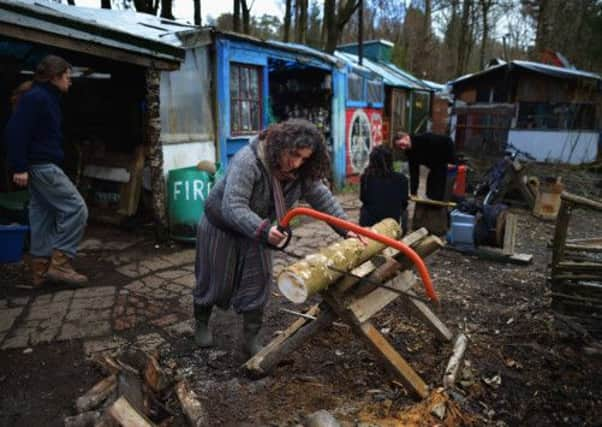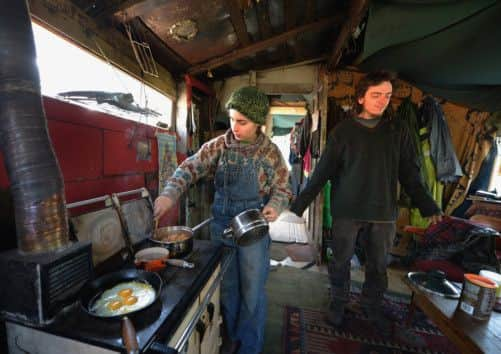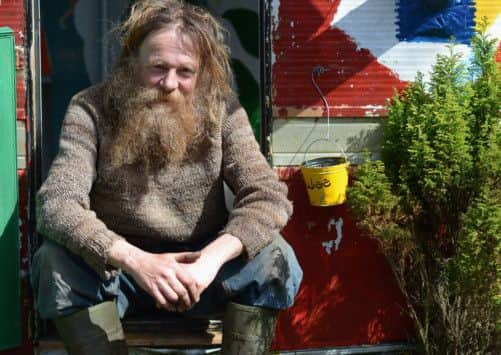Faslane peace camp facing closure


But now, having fought off repeated threats of eviction, the constant vigil maintained by demonstrators at the Faslane Peace Camp in Argyll is to end in June.
With only four residents left, the small population of the camp on the shores of Gare Loch say they will be forced to take the “regrettable” action unless they are joined by a fresh influx of recruits in the next three weeks.
Advertisement
Hide AdAdvertisement
Hide AdIn an open letter on its website, the remaining activists admit the “symbolism of dismantling the camp” represents the “worst possible timing” given the ongoing debate surrounding a replacement for Trident, and next year’s referendum on Scottish independence.


They point out that while they have received strong moral support, they have been forced to bear the “mounting pressure of responsibility and expectation coupled with inadequate and dwindling practical support”.
They state: “Our main hope that this community would grow, in terms of strength through numbers, has not been achieved. Maintaining this space while having an active campaign with so few of us has put us under such pressure, personally and as a collective, that we simply cannot continue.”
The news, which is a blow for Scotland’s longstanding anti-nuclear weapon movement, comes just weeks after protests across the country against the Trident system, which included a mass blockade at Faslane. Police arrested 47 protesters outside the base, home to Britain’s nuclear weapons, after campaigners chained themselves together.
The camp is sited a mile from the base. In the 1980s there were more than 20 people living there permanently but it shrank in the late 1990s after the site licence was removed. On Friday, three of the remaining residents – Angus Chalmers, 20, from Edinburgh, Julia Herzog, a 23-year-old from Mainz in Germany, and Gwilym (he would not give his second name), 55 – were occupied with housekeeping tasks, chopping firewood, cooking lunch and paring back weeds.


In the “tea room”, a wooden carbuncle which serves as the kitchen and main communal space, they take turns sending emails and answering the elephone, all the while rallying support for their cause.
“The camp was founded in an era of the Cold War, and while that threat has receded, the moral argument, the principle, remains,” said Chalmers, who has lived in the camp for two years.
“But I think there has been a failure in the peace movement in general to bring on young people. We have wanted to grow a wider movement and get people to commit to living here, but we will have to wait and see if we can continue.”
Advertisement
Hide AdAdvertisement
Hide AdHerzog, who has been at Faslane for 18 months, agreed: “We want to address the people in power, but at the same time maintain the camp. It is not easy with four people.”
History
The peace camp was established on 12 June, 1982, when veteran anti-nuclear protesters Bobby and Margaret Harrison pitched their tent by the side of the A814. Their fledgling collective was granted a lease of the plot by the then Strathclyde Regional Council for a peppercorn rent arrangement of just £1 a month.
The Harrisons left after several months, but in the decades that followed, the camp has been home to thousands of activists, some staying for days, others for years. In the 1990s, the group faced down eviction orders and court battles with Argyll & Bute Council.
Unless resident numbers at least double and the “wider peace movement assumes a degree of collective responsibility”, the group says, it intends to begin winding the camp down in May so it closes on 12 June, its 31st anniversary. In its place would be a garden that will celebrate it as a historic site of “resistance”.
Arthur West, chair of the Scottish Campaign for Nuclear Disarmament (SCND) sympathised with the sacrifices made by those who live at the camp, but vowed the peace movement would go on, come what may.
“I think we have been very supportive of the peace camp and it has made a major contribution to the awareness of nuclear weapons in Scotland,” he said.
“There’s an element of significant personal sacrifice involved in the camp, where people live in quite austere conditions, so it’s unclear just now whether they will find anyone.
“But my message to the Scottish Government and Westminster is that the peace movement is alive and kicking.”
Advertisement
Hide AdAdvertisement
Hide AdIn a fortnight’s time, supporters of the camp’s cause will be invited to the colourful cluster of caravans, minibuses and huts to discuss whether are willing to go a step further and move in. The proud residents retain a cautious optimism that others might see the camp’s significance, both historically and for the years and debates to come.
“There should be a Historic Scotland blue plaque outside this place,” says Gwilym, grinning. “After all, it’s been here longer than the Scottish Parliament.”